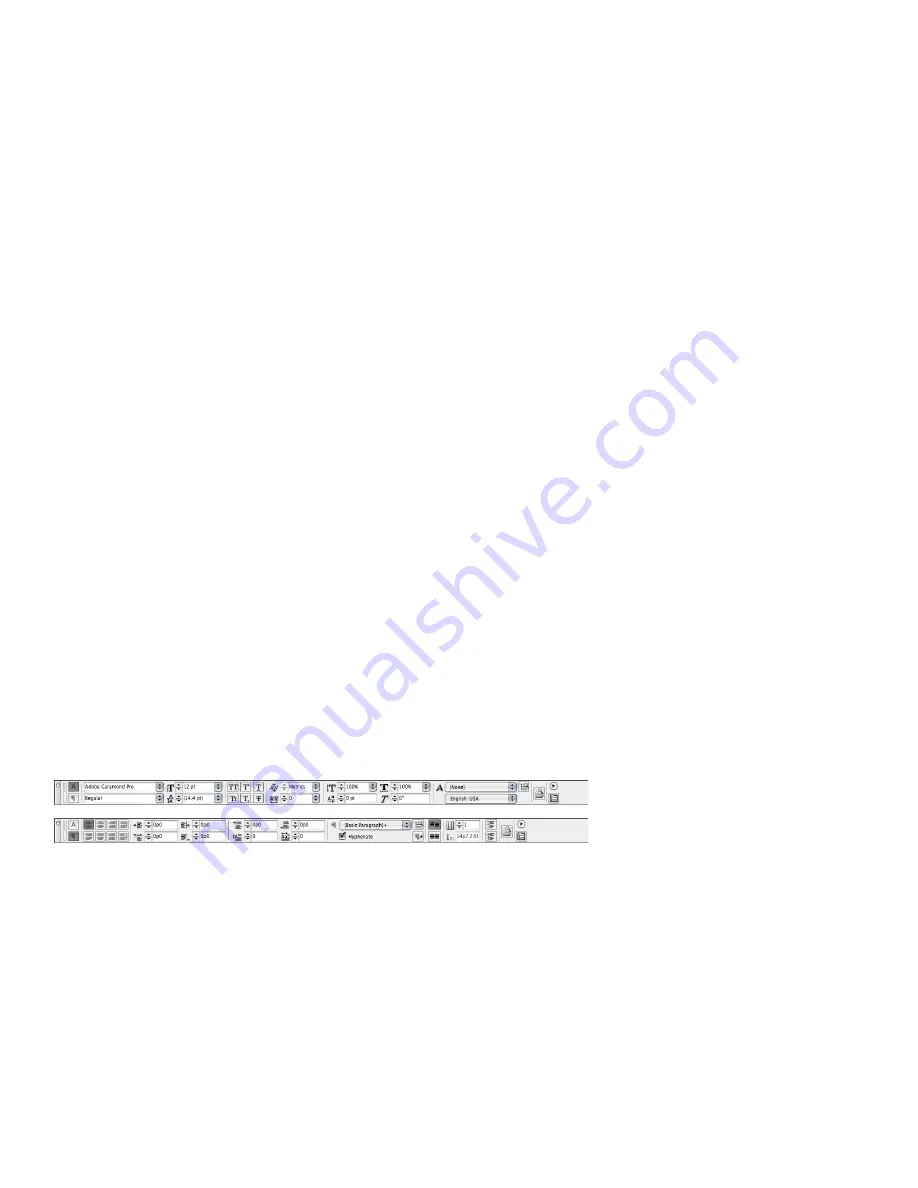
Switching from PageMaker to InDesign CS2
•
Adding an existing frame to a thread.
To add an existing frame to a thread, choose the
Selection tool, select a text frame, and then click the in port or the out port to load a text icon.
Next, position the loaded text icon over the frame you want to connect to. The loaded text icon
changes to the thread icon. Click inside the second frame to thread it to the first.
•
Adding a frame within a thread.
To add a frame inside a sequence of threaded frames, choose
the Selection tool, and then click the out port at the point in the story where you want to add
a frame. When you release the mouse button, a loaded text icon appears. Drag the loaded text
icon to create a new frame, or select a different text frame. InDesign CS2 threads the frame
into the series of linked frames.
Unthreading text frames
You can break the link among threaded text frames by double-clicking the in port or the out port
of any frame. When you unthread a text frame, you break the connection between that frame
and all subsequent frames in the thread. Any text that previously appeared in the disconnected
frames becomes overset text (no text is deleted). All subsequent frames are empty.
You can also cut a frame from a thread and paste the frame elsewhere. The frame is removed
with a copy of the text within, but no text is removed from the original story. When you cut and
paste a series of threaded text frames at once, the pasted frames maintain their connections to
each other, but lose connections to any other frames in the original story.
When you cut (Edit > Cut) the last frame in a story, the text is stored as overset text. If you want
to use the disconnected frame and the text it contained elsewhere in your document, go to the
page where you want the disconnected text to appear and choose Edit > Paste. The pasted text
frame contains the text in the copied frame but is not connected to the original thread.
Formatting text manually
PageMaker and InDesign CS2 offer two methods for formatting characters and paragraphs:
• You can manually apply character and paragraph formats to highlighted text or to the flashing
text insertion bar.
• You can create styles that you can use to apply multiple formats to text. PageMaker lets you
create only paragraph styles, while InDesign CS2 lets you create both paragraph and character
styles and even nest character styles within paragraph styles for faster application of complex
text formatting.
The simplest way to format text manually in InDesign CS2 is to use the Control palette (Window
> Control), which is very similar to the Control palette in PageMaker. When you select text or
click an insertion point in a text frame, the Control palette changes to display one of two modes
for formatting text depending on the button you click on the left of the palette. Click
A
to display
character formats; click
¶
to display paragraph formats. The options displayed in each mode are
similar to those displayed in PageMaker.
Control palette: character formatting controls (Top). Control palette: paragraph formatting controls (bottom).
In InDesign CS2, the options displayed in the Control palette’s Character mode match those in
the Character palette (Type > Character); the options displayed in the Control palette’s Paragraph
mode match the options in the Paragraph palette (Type > Paragraph). The Control palette menu
includes additional options for formatting characters and paragraphs, depending on whether the
Control palette is in Character or Paragraph mode.
In addition to formatting text manually, you can also use character and paragraph styles to quickly
apply several formats to text in a single step. For more information about using character and
paragraph styles, see Section 7, “Working with Styles,” on page 37.






























